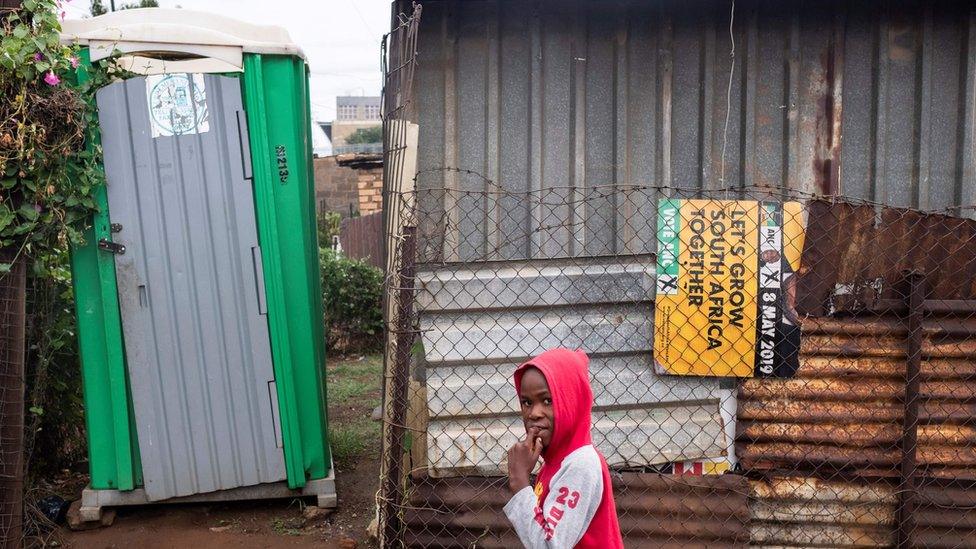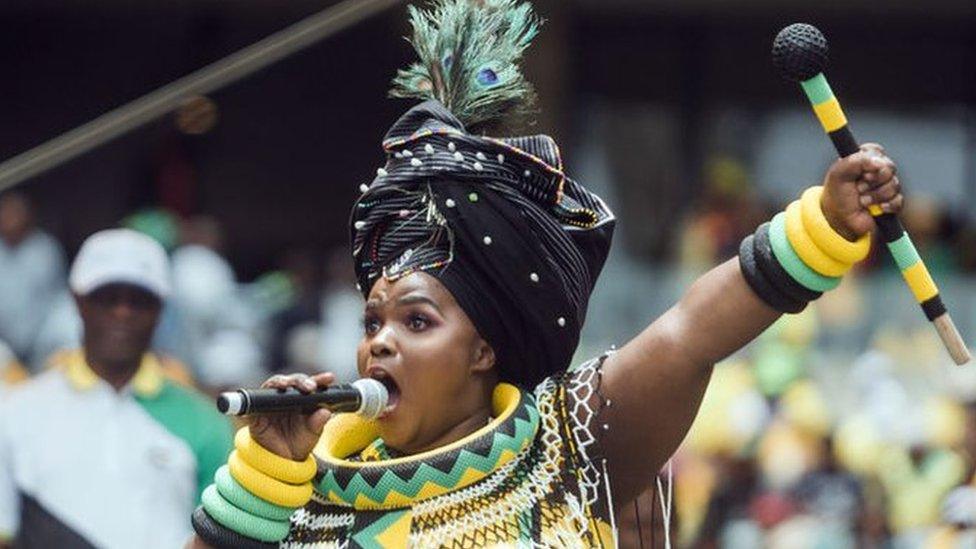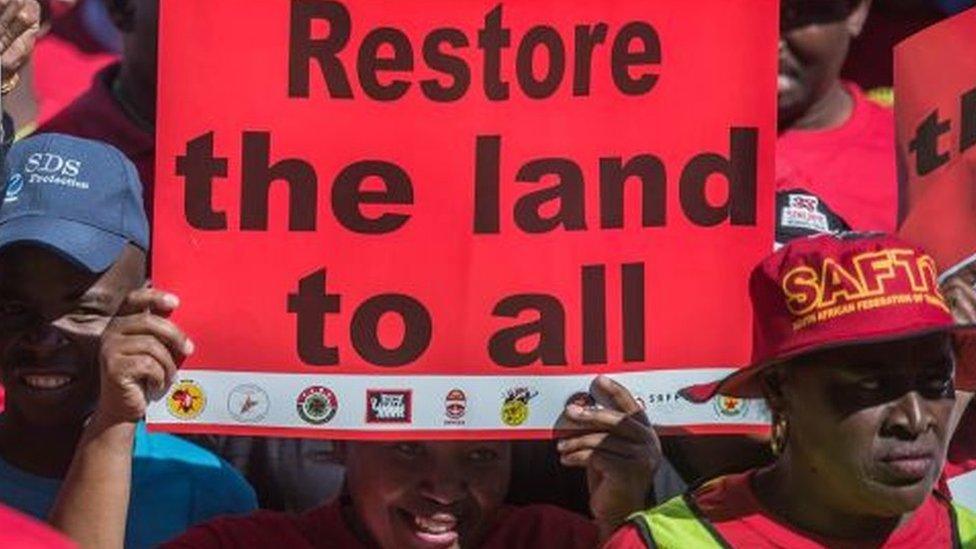South Africa elections: Is the gap between rich and poor widening?
- Published

South Africans go to the polls on 8 May with, the gap between the rich and the poor set to be a key issue.
It is Africa's most industrialised economy - but it is also one of the world's most unequal.
The opposition says this has been getting worse under the ANC, which has been in power for a quarter of a century.
So is this true? BBC Reality Check looks at the numbers.
Measuring inequality
One measure used by economists to illustrate the degree of inequality within a country is known as the Gini scale. It's based on personal income - the higher the number, the greater the inequality.
On this scale, a zero value represents a completely equal society and 100 the most unequal.
It doesn't tell the whole story but it is at least a starting point for looking at inequality in South Africa both over time and compared with other countries.

By this measure, and using data published by the World Bank, South Africa has the highest level of inequality in the world.
Its neighbours Namibia and Mozambique are close behind, with Brazil also making its way into the top four.
If we then look at the change in this measure over time, and take the period since the ANC came to power in 1994, inequality rose through the 1990s to a peak in 2005.
Since then, it has not changed significantly.

So, based on the Gini data, critics of the ANC government are correct to point out that inequality is very high in South Africa.
But they are not correct in saying that it's getting worse, at least not over the last decade for which data is available.
Slower economic growth
For several years after it came to power, the ANC government made progress in reducing poverty and improving access to basic services.
This was helped by years of decent economic growth - but now that has slowed.
The result is that, overall, South Africans are now poorer.
Income per head - that is, the total output of the economy divided by the population - has fallen fairly steadily since 2010.

Unemployment has continued to rise over this period.
The opposition Democratic Alliance leader, Mmusi Maimane, says the gap between "economic insiders and outsiders" has grown.
"There is no indication of it closing. We are a country split in two," he says.
And Nkosazana Dlamini-Zuma, a minister in the South African presidency, says: "Inequality has remained stubbornly high."

More about the South African elections:

Has poverty got worse?
Using the South African government's own measure of poverty - any household earning below $55 (£42) per month - the official data shows that between 2006 and 2011 the proportion below that level dropped from 51% to 36.4%.
But by 2015, this proportion had risen again - to 40%.
"On the whole, the poor have not been the direct beneficiaries of economic growth," says Carlene van der Westhuizen, a South African economist who has written a report for the US-based Brookings Institution.

Differences in employment incomes were the largest contributor to inequality in South Africa between 2006 and 2015, external, according to a joint World Bank and South African government report.
"Access to higher levels of education and stable labour market income are key determinants for households to achieve economic stability in South Africa," the report says.
The country's welfare system has been credited with reducing extreme poverty but sustaining it will prove costly for government finances.
Which groups are most affected?
A higher proportion of black South Africans have historically lived in poverty compared with Asian and white South Africans.
And between 2011 and 2015, the proportion of black and Coloured (mixed-race) people in poverty increased, according to government data.

A little over 10% of the working population is white - but this group earns nearly three times the average wage of black South Africans, who make up nearly three-quarters of the labour force.
Although wages have increased for all racial groups, the middle earners have lost the most in the post-apartheid era.
Wages for high income earners are growing at almost twice the rate of those of the lowest earners, according to the World Bank.
And the share of total income for the richest 1% doubled in the 20 years after 1994 to levels comparable with those seen in the United States.


- Published13 January 2019

- Published11 August 2018
